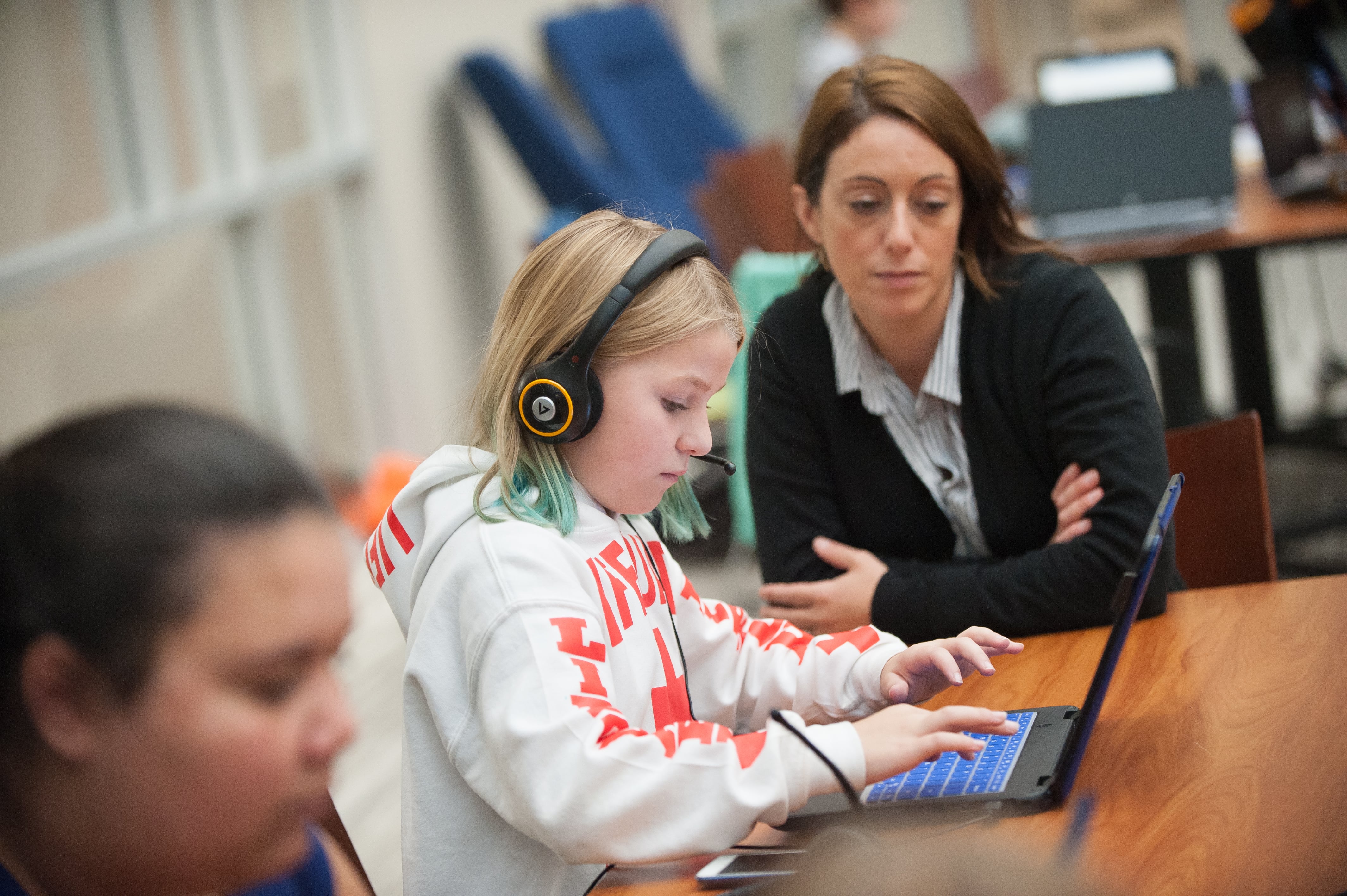“Writing is easy,” 20th-century journalist Gene Fowler said. “All you do is stare at a blank piece of paper until drops of blood form on your forehead.”
Writer’s block is a real phenomenon, unchanged since the days when authors scrolled paper into typewriters or dipped quill pens into ink.
Writer’s block can impede a child’s progress in school, because writing expresses comprehension of classroom lessons. A well-written paper cobbles together research findings into original thoughts and revelations. Writer’s block interferes with completing assignments, meeting due dates and learning new concepts that lead to the next level of academics.
Helping students overcome writer’s block is a key to school success. CCA wants learners not only to break through writer’s block but to experience the joy of writing as a form of expression and discovery.
What Causes Students to Experience Writer’s Block?
Writer’s block begins when fear or lack of inspiration sets in, linguists and writers say. Because school writing is meant to be read and graded, your child might be afraid that the final work won’t be good enough. The longer writer’s block endures, the worse it gets as it builds into intense anxiety.
Fortunately, writer’s block can be defeated. To help students overcome writer’s block, parents can try these tips.
1. Don’t Stress — It Happens to Everyone!
“I can’t do it!” your child might cry. This is the time to cite a name every child knows — J.K. Rowling. Even the creator of Harry Potter admitted that the first round of publicity for “Harry Potter and the Sorcerer’s Stone” frightened her from working on the sequel, “Harry Potter and the Chamber of Secrets.” As we all know, her writer’s block was only temporary. “I was scared the second book wouldn’t measure up,” she recalled, “but I got through it!”
Writers of all types, stripes and fame can point to periods of writer’s block. The point is that it’s manageable. Stress becomes counterproductive, leading to yet more writer’s block. Helping your child understand that writer’s block is a natural and universal experience can bring down the temperature. Even when the stakes are high, your learner might like to know that he or she is not alone.
2. Give Your Student Time to Think
Not everyone can sit at the computer or in front of a piece of paper and start producing immediately. Quiet time for reflection helps the all-important beginning emerge from a jumble of thoughts. Many writers take a walk or enjoy some exercise to unblock the brain. Some turn off the computer for the day and sleep on the problem.
Time to think can promote relaxation that relieves the stress of writer’s block. A bit of stress can be healthy, creating sensations in the brain that promote logic and organization. However, too much stress can interfere with creativity and the brain’s natural processes. A few moments to think, breathe and get thoughts in order can help your child step up to the job refreshed and ready to share those brilliant ideas.
3. Create Small and Feasible Writing Goals
The sheer scope of an assignment can fuel writer’s block. Whether it’s a third-grade essay or a senior thesis, your child can flinch at the thought of even beginning such a big task.
At CCA, we encourage personal goal setting as a tool for academic success and lifetime fulfillment. Writer’s block can be defeated through wise use of goals that are SMART — specific, measurable, attainable, relevant and timely.
For instance, don’t just aim for your child to “write more.” Instead, set a specific goal, such as writing every day, even if it’s not for an assignment. Think of writing as a muscle that requires exercise to stay in shape.
Make those goals measurable, such as time spent writing or pages filled, and attainable, according to your child’s grade level and skills. Be sure they are relevant and meaningful to your child and have a time frame for completion.
Break down large goals into small chunks. If an essay is meant to be one page, suggest that your child write only one paragraph. It doesn’t even have to be at the beginning. If your child has a thought that will go somewhere else, that’s OK. Writing it down captures the idea, and success inspires your child to keep writing until the paper has a beginning, middle and end.
4. Encourage Your Student to Complete a Fastwrite
When your child can’t start a writing assignment, encourage a fastwrite. The goal is to set the brain in motion, putting down words even if no one will see them.
To begin, set a time limit from five to 20 minutes, and ask your child to:
- Start writing words and thoughts related to the assigned topic
- Keep writing, and don’t stop for any reason
- Don’t correct any errors or erase anything
- Write the same word over and over if they’re stuck, until new thoughts come to mind
When time is up, review the results. Have your child underline any phrases of particular interest. Use those phrases to keep “unpacking” thoughts with further details on the topic. As your child breaks the logjam, organized thoughts should start coming to mind, and writing for the assignment begins.
Fastwrites unrelated to an assignment can help make writing fun and keep the writing habit sharp. Consider writing prompts that encourage your child to focus on a topic, whether it’s this morning’s breakfast or imagining a trip to the moon.
5. Minimize Distractions
Children live in a world of distractions — televisions blaring, phones pinging, smart devices yammering, video games just waiting to be played. Many children aren’t yet able to tune out distractions, so they are easily sidetracked from writing.
Consider these tips for minimizing distractions and helping students overcome writer’s block.
- A quiet space in the home designed specifically for learning can minimize distractions and signal to your child that it’s time for schoolwork. Your child’s learning space should be uncluttered and free of electronic devices not needed for school.
- Keep writing supplies at hand, to prevent time wasted on searching for pencil and paper.
- Establish rules for the school day at home. Don’t allow television, video games or phone calls unrelated to school. Cyberschooled siblings often study together, which is one of the great advantages of online learning, but don’t allow them to interfere with each other’s work.
- Take time off. When writing becomes a grind, that is a distraction in itself. Give your child breaks, whether regularly scheduled to make sure they’re getting physical activity or spontaneous when the inspiration to write just isn’t coming.
6. Don’t Strive for Perfection
Fear of criticism or a bad grade is a powerful deterrent for children, but parents can remind them that doing their best doesn’t have to stop them from trying. The key to overcoming writer’s block is getting past the fear of rejection and helping your child capture thoughts and ideas related to the assignment.
Consider these tips to get past the fear of rejection.
- Set aside a time every day for writing, whether school-related or not.
- Prepare. Often, writer’s block is a signal that your learner isn’t ready to tackle the assignment. Take time to write an outline or do more research.
- Cultivate inspiration. Get some sleep or take a break, giving ideas time to form.
- Just write. Letting words flow is a writing process. Editing will come later.
- Shake up the writing environment. A change of scenery or even standing at the desk can offer a fresh perspective.
- Prepare for critiques. Remind your child that every comment from the teacher is a learning opportunity that will make writing come more easily the next time.
- Establish rewards. It’s important to teach children that a job well done is its own reward, but the occasional treat can be an enticement through a rough patch.
- Make it personal. Maybe your child loves dinosaurs but the assignment is on sedimentary rock. Can your learner find ties between the two?
Help Your Student Overcome Writer’s Block
How can a student overcome writer’s block? Through diligence and practice, but in a low-pressure manner. Children should learn to love writing as a tool for self-expression and a doorway to pursuing their interests and passions.
Commonwealth Charter Academy helps students overcome common learning challenges. We give families the supports and services to maximize learning opportunities and minimize their struggles. Our personalized learning approach prepares learners for life after high school, equipping them to pursue their interests and master the skills for lifetime success, including writing. Contact us to learn more about our programs and resources.



